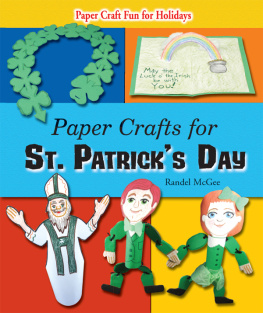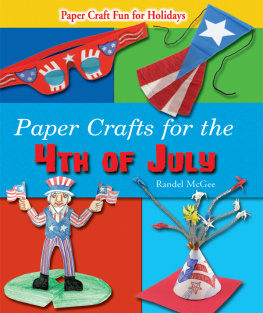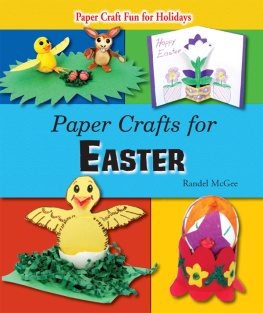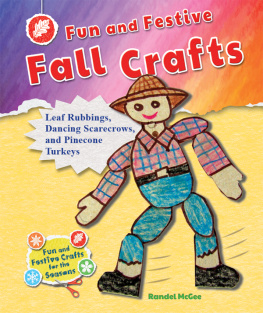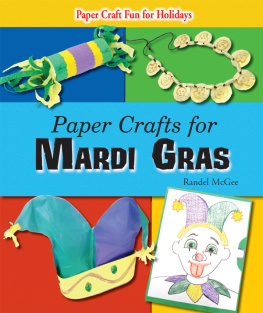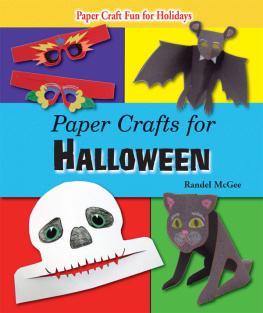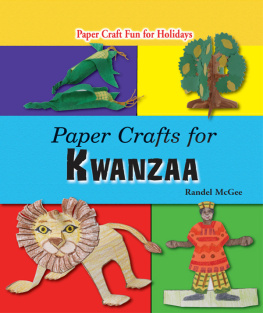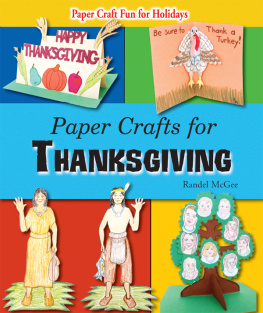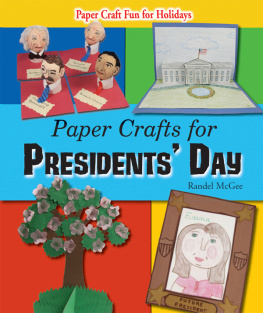SHAMROCKS! LEPRECHAUNS! POTS O GOLD!
Make your own leprechaun hat, pot o gold and rainbow pop-up card, Celtic knot chain necklace, and more! Join the St. Patricks Day celebration as storyteller Randel McGee explores the history behind this famous Irish holiday in Paper Crafts for St. Patricks Day!
If you dont know what a limber jack is, read and learn how to make one! Learn how to cut out shamrocks and make a chain of them while everyone has fun celebrating the day we all become Irish.
Duncan R. Jamieson, PhD, Professor of History, Ashland University
ABOUT THE AUTHOR
Randel McGee is a storyteller, puppeteer, ventriloquist, and paper-cutting artist. He performs all over the world, sharing his paper-cutting stories with children and adults.

Maewyn Succat was a rowdy and reckless lad. His carefree life quickly changed when he was captured by fierce raiders and carried away to the wild land across the windy sea. He was sold as a slave and forced to tend sheep on lonely green hills. For six years he lived among strange people in a land far from home. One day he escaped, and, with luck and faith, he found his way to a ship sailing for his homeland. It took many weeks and lots of adventures, but he arrived home.
Maewyn decided to become a priest and took the Roman name Patricius. One night Patricius had a dream. He saw a man with a letter from the people of the wild land he had escaped. He heard the people of that land, Ireland, asking him to return to them and teach them the Christian faith. He did return to Ireland to teach the people. The Irish people called him Patrick.
Patrick traveled all around Ireland, building churches and schools and teaching the people the Christian faith. There were those who fought against Patrick and his beliefs, but he pushed forward with faith and courage. He became well loved for his service to the people. Priests of that time often shaved the tops of their heads, so the Irish nicknamed Patrick Old Shaved Head. He served in Ireland for more than thirty years and is generally believed to have died on March 17, in the late fifth century (sometime between 460495 CE).

Image Credit: Richard Levine/Alamy
The Irish people honor St. Patricks life on March 17. The first St. Patricks Day parade was held in New York City in 1762. Many cities around the world now have special celebrations and parades on this day. This day celebrates not only St. Patrick but also Ireland and its people and culture. Wherever this day is celebrated, everyone, no matter where they are from, playfully becomes Irish for the Day.
Ireland is called the Emerald Isle due to its green fields and forests. Green is the color traditionally worn on this day. The lucky three-leaved shamrock is a popular symbol of Ireland. Leprechauns, the magical little people of Irish folktales, also appear on this day ... in decorations. On St. Patricks Day, show your Irish Spirit with the decorations and costumes you can make from this book.
AUTHORS NOTE: Many of the materials used in making these crafts may be found by using recycled paper products. The author uses such recycled items as cereal boxes and similar packaging for light cardboard, manila folders for card stock paper, leftover pieces of wrapping paper, and so forth. This not only reduces the cost of the projects but is also a great way to reuse and recycle paper. Be sure to ask an adult for permission before using any recycled paper products.
The projects in this book were created for this particular holiday. However, I invite readers to be imaginative and find new ways to use the ideas in this book to create different projects of their own. Please feel free to share pictures of your work with me through www.mcgeeproductions.com. Happy Crafting!
Patrick was not officially named a saint by a pope but was declared a saint by the people of Ireland for his love, devotion, and great works. It is told that he did amazing acts of a spiritual nature that strengthened the peoples belief of his Christian teachings. We do not know for sure what he looked like, but he probably wore the robes and miter hat of a Catholic bishop when he was serving in the churches he founded.
- tracing paper
- pencil
- white card stock
- crayons or markers
- construction paper in any color (optional)
- scissors
- clear tape

1. Use tracing paper and a pencil to transfer the pattern from to white card stock.
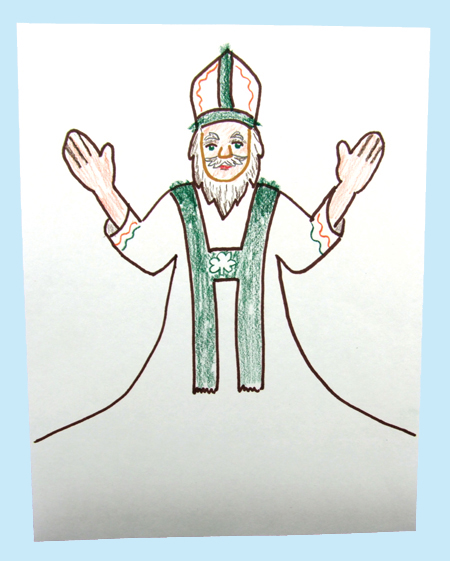
2. Decorate the figure with crayons, markers, or pieces of colored construction paper as you wish.

3. Cut out the pattern along the black outlines.
4. Fold the arms slightly forward.
5. Tape the sides of the robe together behind the figure.

6. Stand the figure up on a table or desk to watch over your St. Patricks Day celebration.
The shamrock is a three-leaved plant. The name comes from the Old Irish word seamrg, which means little clover. The ancient Irish thought three was a lucky number. St. Patrick used the shamrock to explain religious concepts. The shamrock is considered a national emblem of Ireland and often appears on business signs, schools, sports teams uniforms, and public offices. Bring the lucky, green shamrocks to your classroom, home, or party with this simple decorative chain.
- tracing paper
- pencil
- construction paper
- scissors
- crayons or markers (optional)

1. Use tracing paper and a pencil to transfer the pattern from to the construction paper.
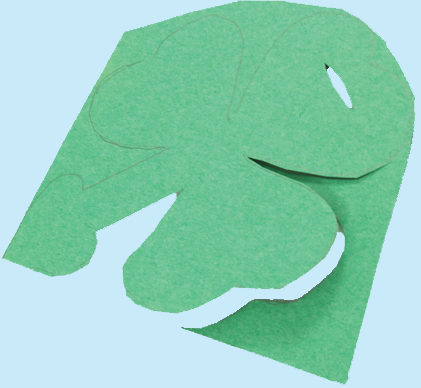
2. Cut out the pattern. Be sure to cut the small slit at the top of each pattern piece.
3. Decorate the pieces with crayons or markers if you wish.

4. Fold in the sides of the arrow point of the pattern. Slip the point through the slit of another pattern piece.
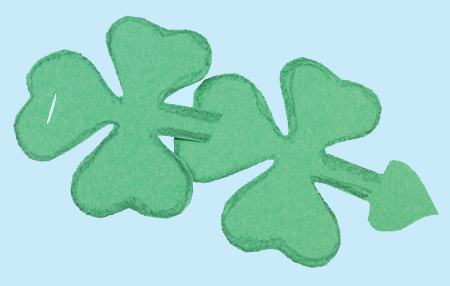
5. Open the folded points so that the arrow holds the pattern in place.


